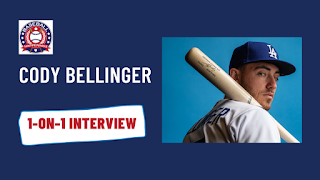 |
|
The 2021 World Series won by the Braves / Topps |
The Atlanta Braves just overcame the Houston Astros to claim the 2021 World Series after what was an utterly enthralling season of baseball, but we are already thinking about how next season will go – and who might win the 2022 Fall Classic.
Read on to find out who the favorites at vegasbetting.com to make the playoffs are – and what baseball fans can expect to see in the ballparks next year.
Braves to Repeat?
Atlanta ‘only’ won 88 games in the regular season in 2021 and was ranked third in the National League going into the playoffs. An excellent postseason run saw the Braves overcome Milwaukee in the NLDS, before beating favorites Los Angeles Dodgers in six in the NLCS. It then took another six games to get past Houston to win the World Series.
There doesn’t seem to be too much appetite for backing the Braves to repeat in 2022. A lot will depend on whether Freddie Freeman will return, even though Atlanta should be fine to finish atop of what is a very inconsistent NL East. Anything can happen in the playoffs, of course, but Atlanta might not be celebrating again this time in 2022.
Dodgers the Sportsbooks’ Favorites
Unsurprisingly, the Los Angeles Dodgers have been named the favorites with the bookmakers to win the World Series next year. That was the case this year. The Dodgers won 106 regular season games, but couldn’t take the NL West; however, they got revenge against the Giants in the NLDS.
There are plenty of question marks about the Dodgers going into 2022. A lot of money was spent two years ago to win multiple World Series – and that hasn’t quite happened. The flag was won in 2021, but there was no repeat. Now with many of their leading players as free agents, there is an uncertainty that hampers any real confidence in a Dodgers title.
MLB Teams to Look Out for in 2022
It doesn’t look as though there will be many surprises in 2022. A bunch of teams will be expected to make repeat postseason appearances – but once it gets to that point, that is where things will get interesting. As far as the regular season goes, the NL West is worth keeping an eye on. San Diego was disappointing in 2021, but could upset either San Francisco or Los Angeles next year. The American League looks a little bit more predictable. Houston and the Chicago should win their respective divisions once again, while Tampa Bay should have the East locked up. The real battle in that division is with Toronto pushing to upset the Red Sox and Yankees to sneak into the wild card spots.
Race for the Flag The 2021
MLB playoffs showed that anything can happen once the regular season ends. Tampa won 100 games last year and then fell to the Red Sox in the ALDS – a team that won eight fewer in the regular season. Both number one seeded teams fell away well before the World Series too. Baseball’s postseason system might seem a little cruel to fans of other sports. After such a long and grueling regular season, only five teams out of 15 have a chance of progressing – and one of those only gets a one-off wild card game to stay in the competition. Whoever does make it to the World Series has definitely earned it.
Final Words
This article didn’t set out to confidently predict the winner of the 2022 World Series; however, hopefully you will see the race for the flag will be just as intense next year as it always has been. There will be some very familiar faces at the business end of the season – that’s for sure. But as far as the 2022 champion goes at this point it's all speculation.



















